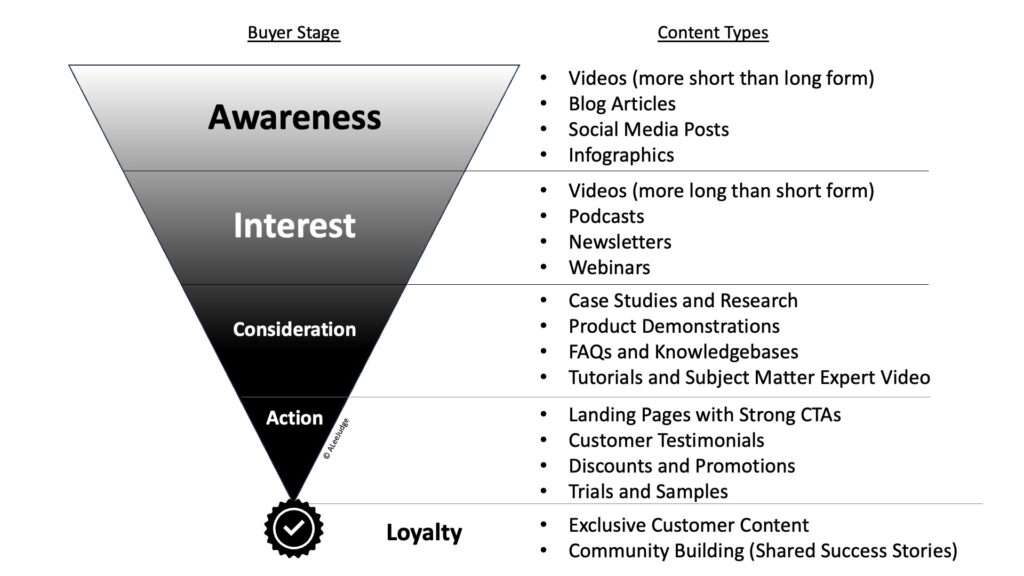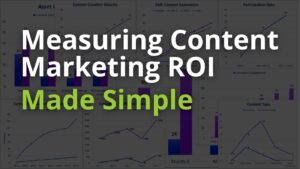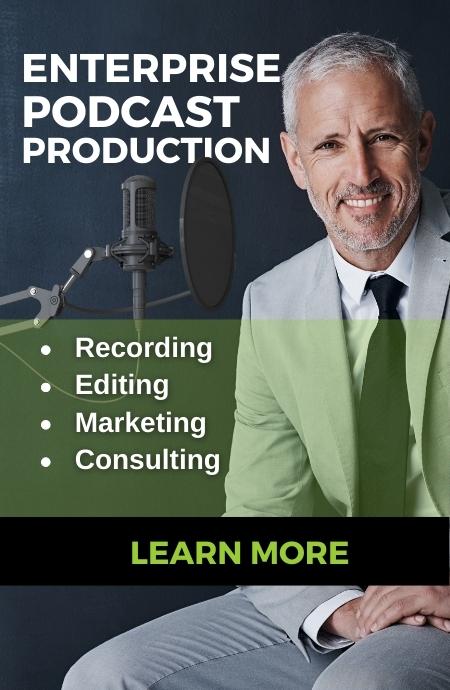There are several digital marketing content types that are sure to drive business over the coming years. It’s no secret that content marketing is the driving force behind most, if not all, of the other forms of digital marketing, regardless of business size or industry. However, many companies struggle to decide which types of marketing material will work well to drive their business.
It’s essential to keep in mind that content marketing is an evolving organism, being influenced by the digital environment it inhabits. Changes in customer behavior, interests, shifting markets, as well as evolving algorithms are having a tremendous impact in regards to which type of material will generate the most results.
Also, many organizations forget that content marketing is an inbound form of marketing. Instead of bombarding customers with ads and promotions, it provides them with valuable and useful content in exchange for their business.
However, this means that results will only start presenting themselves in time and with the necessary consistency. Nevertheless, once the business-customer connection establishes, a snowball effect develops, resulting in passive benefits down the line. That said, here are five digital marketing content types that drive business in today’s day and age.

Native Social Content
Today’s dominant social media platforms allow for a wide variety of content to be created specifically for that platform. It is what’s known as native social content. It includes stories, specifically tailored images, short videos, infographics, GIFs, and all sorts of other bite-sized content created natively for that particular social media platform.
Keep in mind, however, that every social platform works best with a specific type of content and generally caters to different target audiences.
In addition to native content, you can also repurpose your other content, such as blog posts, and share them on social media. Instead of just copying them to other platforms, however, you should consider revising them to fit that social platform better.
Podcasts
Podcasts are quickly coming to prominence in the content marketing world. They are a perfect medium to establish trust and build your brand’s awareness. They offer an excellent opportunity to showcase your company, shop, customers, and industry, as well as a perfect place to capture thought leader interviews.
Putting together a podcast is not as difficult as it may seem at first glance, however certain aspects need to have special attention. You should always maintain consistency with your topics and the production schedule.
Always do your research beforehand by laying out all the talking points in advance. Also, make sure that you have time, as well as a place where you can record. Last but not least, you will need a team that’s able to produce and edit this type of content.
Video Content
Video content is, without a shadow of a doubt, the best type of digital content to invest in in the 21st century. As of 2019, the video makes up over 80% of all customer-oriented traffic on the internet.
And given the fact that almost two-thirds of people are more inclined to purchase after watching a video and that more than half of all internet users watch videos every single day, it’s no surprise why.
Another significant benefit of the video is that you can use it pretty much everywhere from your website to social media and even in email newsletters you send to your leads. Statistics also show that a video on a landing page can increase conversion rates by 80% while videos present in emails can increase click-through rates by as much as 300%. And between the many types of video content that you can use, you can cover all of the buyer’s journey from start to finish.
And when you choose video as the pillar content for your digital marketing strategy, all other types of material can be derived from it. You can turn everything from blog posts, white papers, testimonials, social media content, infographics, etc. into video and vice-versa.
Long-Form Blog Articles
When it comes to blog articles, longer is better. In the early days of digital content marketing, however, shorter pieces were the more advantageous option, but this is no longer the case. Many marketers have come to realize that, if they produced quick, low-quality content in bulk, they would capture people’s attention by sheer numbers, alone.
But since this technique borders on spamming, its days were numbered. What’s more, Google has also introduced a new algorithm that can differentiate between which blog posts provide value to readers and which don’t. And it shouldn’t come as a surprise that long-form content is the better option.
Long-form content refers to blog posts that are generally over 1,000 words, with most experts saying that an average of 1,600 words being the optimal length. There are several reasons why the long-form blog content is better.
Firstly, you will have to do more research when writing such a blog post. It automatically means that its quality and value to the reader will also increase. You can get more in-depth articles from thought leadership videos, for example.
Second, you will have to add more backlinks to the article, making it easier to rank in Google’s search results. With a better quality article, it stands a better chance of it being backlinked, increasing its indexation into Google even further. Besides, long-form content generates more engagement on social media platforms.
Downloadable Quality Content
Downloadable quality content such as case studies, white papers, eBooks, guides, and research are also core elements part of a sound content marketing strategy. Case studies and guides illustrate how your business is helping others become successful. They typically highlight special applications for your product, helping your audience understand how your brand brings them value.
eBooks and white papers are a type of long-form content that can act as either a lead magnet (white papers) or provide value to leads and customers (eBooks). Both of them are somewhat similar, and neither should be about product promotion.
They should both provide useful information and insight for your target audience. And while eBooks are more about building a relationship with consumers as a means of developing trust, white papers are better suited for B2Bs and SMEs that want to establish thought leadership and want to build rapport in their industry.
If used wisely, all of these digital marketing content types will help you drive your business like never before. If you choose to make the video the baseline of your content marketing strategy, you will be able to derive all other types of content from it. It will significantly increase the efficiency of your overall content marketing strategy.
Want to learn more? Talk to a professional Content Monsta!
- AI + Human Powered Content Marketing: Speed Without the AI SlopFAST, CHEAP, and GOOD. You can have them all. Speed keeps ...
- How to Measure Content Marketing ROIContent marketing ROI is often miscalculated because it is based on ...
- Why Pay for Remote Video ProductionIf you already have someone on your team who can edit ...







